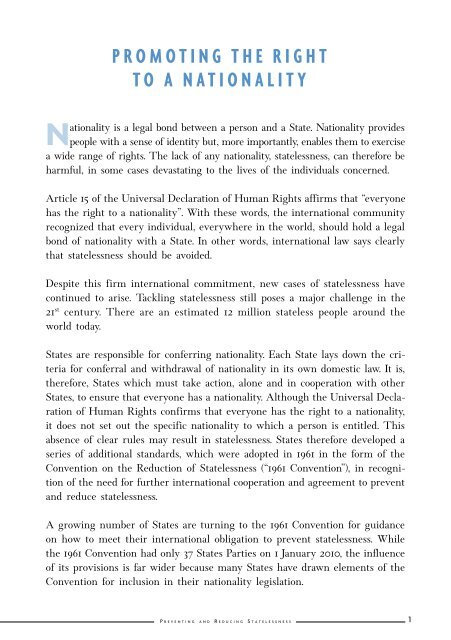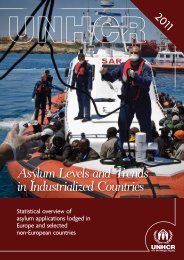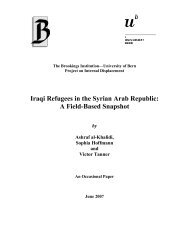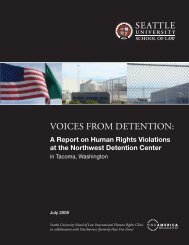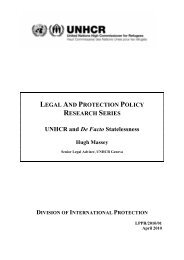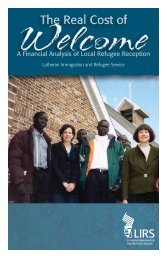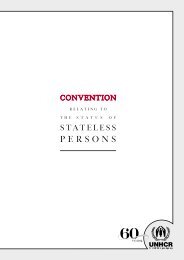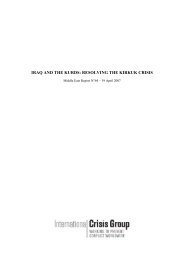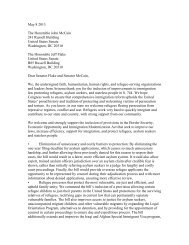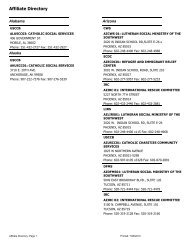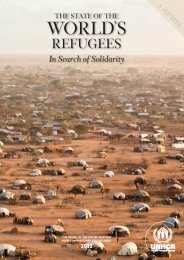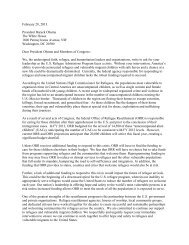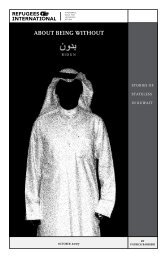Preventing and Reducing Statelessness - UNHCR
Preventing and Reducing Statelessness - UNHCR
Preventing and Reducing Statelessness - UNHCR
Create successful ePaper yourself
Turn your PDF publications into a flip-book with our unique Google optimized e-Paper software.
P R O M O T I N G T H E R I G H T<br />
T O A N A T I O N A L I T Y<br />
Nationality is a legal bond between a person <strong>and</strong> a State. Nationality provides<br />
people with a sense of identity but, more importantly, enables them to exercise<br />
a wide range of rights. The lack of any nationality, statelessness, can therefore be<br />
harmful, in some cases devastating to the lives of the individuals concerned.<br />
Article 15 of the Universal Declaration of Human Rights affirms that “everyone<br />
has the right to a nationality”. With these words, the international community<br />
recognized that every individual, everywhere in the world, should hold a legal<br />
bond of nationality with a State. In other words, international law says clearly<br />
that statelessness should be avoided.<br />
Despite this firm international commitment, new cases of statelessness have<br />
continued to arise. Tackling statelessness still poses a major challenge in the<br />
21 st century. There are an estimated 12 million stateless people around the<br />
world today.<br />
States are responsible for conferring nationality. Each State lays down the criteria<br />
for conferral <strong>and</strong> withdrawal of nationality in its own domestic law. It is,<br />
therefore, States which must take action, alone <strong>and</strong> in cooperation with other<br />
States, to ensure that everyone has a nationality. Although the Universal Declaration<br />
of Human Rights confirms that everyone has the right to a nationality,<br />
it does not set out the specific nationality to which a person is entitled. This<br />
absence of clear rules may result in statelessness. States therefore developed a<br />
series of additional st<strong>and</strong>ards, which were adopted in 1961 in the form of the<br />
Convention on the Reduction of <strong>Statelessness</strong> (“1961 Convention”), in recognition<br />
of the need for further international cooperation <strong>and</strong> agreement to prevent<br />
<strong>and</strong> reduce statelessness.<br />
A growing number of States are turning to the 1961 Convention for guidance<br />
on how to meet their international obligation to prevent statelessness. While<br />
the 1961 Convention had only 37 States Parties on 1 January 2010, the influence<br />
of its provisions is far wider because many States have drawn elements of the<br />
Convention for inclusion in their nationality legislation.<br />
P r e v e n t i n g a n d R e d u c i n g S t a t e l e s s n e s s<br />
1


